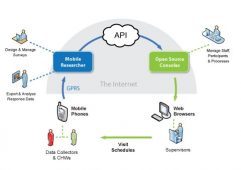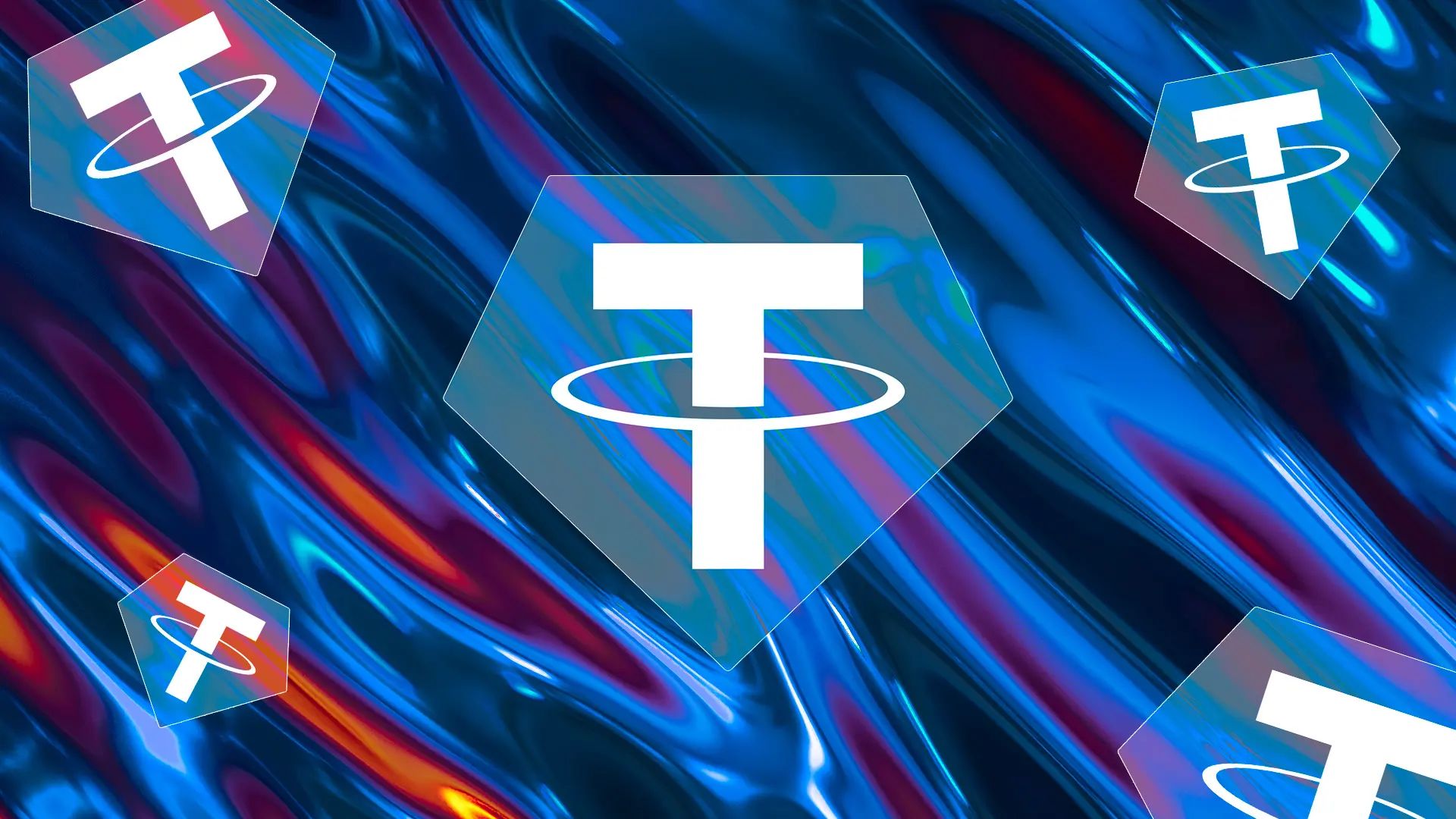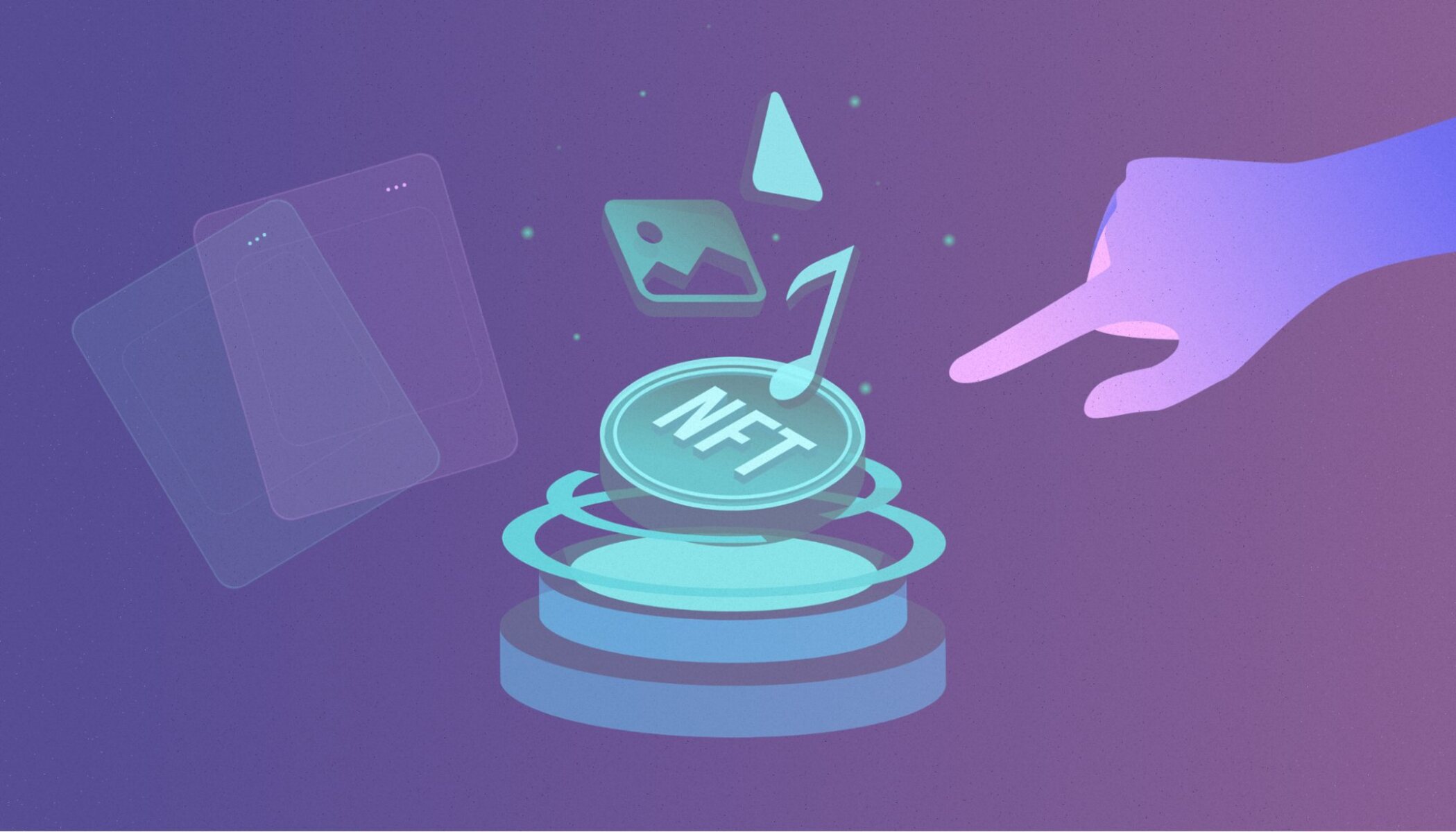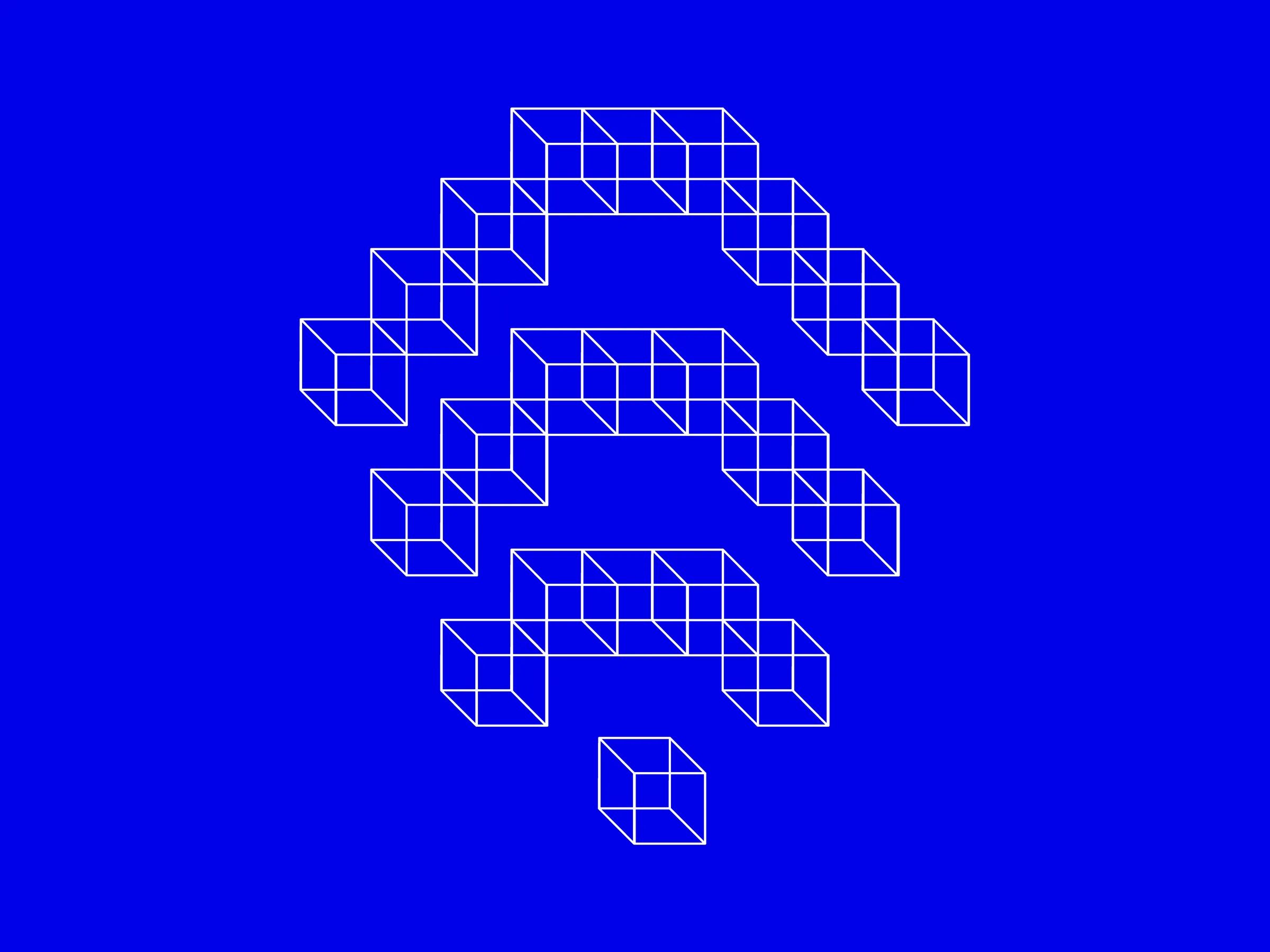Introduction
The advent of blockchain technology has revolutionized various industries, transforming the way we store, manage, and exchange data. Initially introduced as the underlying technology for Bitcoin, blockchain has emerged as a powerful tool with immense potential for a wide range of applications beyond cryptocurrency. From finance and supply chain management to healthcare and voting systems, blockchain offers a decentralized and transparent solution that has the potential to disrupt traditional centralized systems.
At its core, blockchain is a distributed ledger that records transactions and data in a secure and immutable manner. Unlike traditional databases that rely on a central authority, blockchain is decentralized, meaning that it operates on a network of computers, known as nodes, which collectively validate and record transactions. Moreover, blockchain utilizes advanced cryptographic techniques to ensure the security and integrity of the data stored.
This article will provide an in-depth understanding of how blockchain technology works. We will explore the fundamental elements that make up blockchain, such as its decentralized network, consensus mechanism, distributed ledger, cryptography, smart contracts, and the mining process. Additionally, we will discuss the advantages, potential use cases, as well as the challenges and limitations of blockchain technology.
By gaining a solid grasp of blockchain technology and its underlying principles, you will be better equipped to comprehend and appreciate the significance of this groundbreaking innovation. So, let’s dive into the world of blockchain and unravel its intricate mechanisms that power the future of technology.
What is Blockchain Technology?
Blockchain technology is a decentralized and transparent system that enables secure and immutable record-keeping of digital transactions and data. It originated as the backbone of Bitcoin, the first decentralized cryptocurrency, but its potential applications extend far beyond digital currencies.
At its core, blockchain is a distributed ledger that consists of a chain of blocks, each containing a set of transactions or records. These blocks are cryptographically linked together, forming a continuous and tamper-resistant chain of data. The decentralized nature of blockchain eliminates the need for a central authority, such as a bank or government, to validate and authorize transactions. Instead, multiple participants, known as nodes, collectively maintain and validate the integrity of the blockchain.
One of the fundamental features of blockchain technology is transparency. Blockchain records all transactions in a public ledger that can be accessed and verified by anyone. This transparency not only enhances trust among participants but also allows for greater accountability and traceability.
Another key aspect of blockchain is immutability. Once a transaction or record is added to the blockchain, it becomes nearly impossible to alter or delete. This immutability is achieved through cryptographic hashing algorithms, which ensure that each block is linked to the previous block, forming a chain that is resistant to tampering.
Moreover, blockchain technology operates on the principle of consensus. Consensus mechanisms, such as Proof of Work (PoW) or Proof of Stake (PoS), are used to validate and agree on the state of the blockchain. These mechanisms ensure that all participating nodes reach a common agreement before a new block is added to the chain.
By leveraging advanced cryptographic techniques, blockchain technology provides a high level of security. Data stored on the blockchain is encrypted, making it resistant to unauthorized access. Additionally, the decentralized nature of blockchain eliminates single points of failure, reducing the risk of hacking or data manipulation.
Overall, blockchain technology offers a paradigm shift in the way we store, manage, and trust data. Its decentralized, transparent, and secure nature has the potential to revolutionize industries such as finance, supply chain management, healthcare, and more. As we delve deeper into how blockchain works, we will explore its core components and mechanisms that make it a powerful tool for the future.
How Does Blockchain Work?
Blockchain technology operates on a set of principles and mechanisms that ensure the secure and transparent recording of transactions and data. Understanding how blockchain works involves exploring its key components and processes.
- Decentralized Network: Blockchain operates on a network of computers called nodes. These nodes are connected through a peer-to-peer network, where each node stores a copy of the blockchain. This decentralized nature eliminates the need for a central authority and distributes the responsibility of maintaining the blockchain among multiple participants.
- Consensus Mechanism: Consensus mechanisms enable nodes to agree on the validity of transactions and the order in which they are included in the blockchain. Popular consensus mechanisms include Proof of Work (PoW) and Proof of Stake (PoS). In PoW, nodes compete to solve complex mathematical puzzles, requiring computational power and energy consumption. PoS, on the other hand, assigns block validation rights based on the number of cryptocurrency tokens held by each node.
- Distributed Ledger: The blockchain ledger is a distributed database that stores all transactions and data. Each block contains a set of transactions, along with a unique identifier called a hash. The hash not only represents the data within the block but also links it to the previous block, creating an unbroken chain. This distributed ledger ensures transparency and accountability, as any participant can access and verify the records.
- Cryptography: Cryptography is an integral part of blockchain technology, ensuring the security and integrity of the data stored on the blockchain. Advanced cryptographic algorithms are used to encrypt the data within each block and create the unique hash for identification. This encryption makes it extremely difficult for unauthorized users to alter or access the data on the blockchain.
- Smart Contracts: Smart contracts are self-executing agreements coded into the blockchain. These contracts automatically facilitate and enforce the terms and conditions of an agreement without the need for intermediaries. They are executed and recorded on the blockchain, providing transparency, immutability, and security.
- Blocks and Transactions: Transactions form the core of the blockchain. When a participant initiates a transaction, it is broadcasted to the network and verified by the validating nodes. Once verified, the transaction is grouped with other valid transactions into a block. Each block is then added to the blockchain, forming a permanent record of the transactions in a chronological order. Each block contains a reference to the previous block, creating a chain.
- Mining: In PoW-based blockchains like Bitcoin, mining plays a crucial role. Miners use powerful computers to solve complex mathematical puzzles, competing with other miners on the network. The first miner to find the solution earns the right to add the next block to the blockchain, along with a reward. This process ensures the security and integrity of the blockchain and incentivizes participation in the network.
By combining these components and processes, blockchain technology provides a decentralized, transparent, and secure system for recording and managing transactions and data. It has the potential to reshape industries by eliminating intermediaries, reducing costs, enhancing transparency, and increasing trust among participants.
Decentralized Network
A decentralized network lies at the heart of blockchain technology. Unlike traditional centralized systems where a central authority controls the flow of information and transactions, blockchain operates on a network of computers known as nodes.
Each node in the network maintains a complete copy of the blockchain, making it difficult for a single entity to gain control over the entire system. This decentralized architecture distributes the responsibility of maintaining the blockchain among multiple participants, ensuring that no single point of failure can compromise the integrity of the system.
Decentralization brings several advantages to the blockchain:
- Security: Since data is distributed across multiple nodes, it becomes incredibly challenging for malicious actors to tamper with the blockchain. Manipulating the data in one node would require changing the corresponding records in all other nodes, which is computationally infeasible. This makes blockchain highly resistant to hacking and fraud.
- Transparency: In a decentralized network, all participants have equal access to the blockchain and can independently verify and validate the transactions. This transparency adds a layer of trust and accountability to the system, as any participant can inspect the entire history of transactions.
- Reduction of Intermediaries: Decentralization eliminates the need for intermediaries in transactions. Traditional systems often require intermediaries such as banks, brokers, or clearinghouses to facilitate and verify transactions. In a decentralized blockchain network, transactions can take place directly between parties, reducing costs, and increasing efficiency.
- Resilience: With no central authority or single point of failure, blockchain networks are highly resilient against disruptions. Even if some nodes go offline or are compromised, other functioning nodes continue to maintain the blockchain, ensuring the continuity of operations.
- Pseudonymity: While blockchain transactions are transparent, they also provide a certain level of pseudonymity. Instead of revealing personal identities, transactions are identified by cryptographic addresses. This protects users’ privacy while still allowing for transaction verification.
Decentralized networks can be implemented in public or private blockchain systems. Public blockchains, like Bitcoin and Ethereum, are open to anyone who wishes to participate and validate transactions. Private blockchains, on the other hand, are restricted to a specific group or organization, providing more control over access and permissions.
By building on a decentralized network, blockchain technology ensures transparency, security, and the democratization of data. This foundational aspect of blockchain paves the way for trustless and peer-to-peer transactions, revolutionizing various industries and enabling new use cases.
Consensus Mechanism
A consensus mechanism is an essential component of blockchain technology that enables nodes in a decentralized network to agree on the validity and order of transactions. It ensures that all participants reach a consensus on the state of the blockchain without the need for a central authority.
Consensus mechanisms address the challenge of achieving agreement in a distributed system where nodes can be untrustworthy or may have conflicting interests. Different consensus mechanisms have been developed, each with its own set of rules and algorithms. Popular consensus mechanisms include Proof of Work (PoW), Proof of Stake (PoS), Delegated Proof of Stake (DPoS), and Practical Byzantine Fault Tolerance (PBFT).
Proof of Work (PoW): PoW is the consensus mechanism originally introduced with Bitcoin. Miners on the network compete to solve complex mathematical puzzles through intensive computational power. The first miner to solve the puzzle earns the right to add the next block to the blockchain. This mechanism ensures that the majority of the network’s computational power is honest and prevents spamming and tampering with the blockchain. However, PoW is energy-intensive and requires substantial computational resources.
Proof of Stake (PoS): PoS is an alternative consensus mechanism that replaces the computational power requirement of PoW with a stake-based approach. Instead of miners competing to solve puzzles, validators are selected to create new blocks based on how many cryptocurrency tokens they hold and are willing to “stake” as collateral. The more tokens a validator holds, the greater their chances of being chosen to validate a block. PoS is energy-efficient compared to PoW and reduces the risk of “51% attacks” caused by concentrated computational power.
Delegated Proof of Stake (DPoS): DPoS is an enhanced version of PoS that introduces a voting system to select a set number of trusted nodes as “delegates.” These delegates are responsible for validating transactions and adding blocks to the blockchain. DPoS aims to achieve faster transaction speeds by maintaining a smaller group of trusted nodes, but it can be criticized for introducing some degree of centralization due to the limited number of delegates.
Practical Byzantine Fault Tolerance (PBFT): PBFT is a consensus mechanism designed for private blockchain networks. It requires nodes to reach a two-thirds majority agreement before adding a new block. PBFT offers high transaction speeds and low latency, making it suitable for applications that require quick consensus, but it may not be as resilient against a large number of malicious nodes compared to other mechanisms.
These are just a few examples of the many consensus mechanisms available. Each mechanism has its own advantages and considerations, and the choice of consensus mechanism depends on the specific requirements of the blockchain network and its intended use cases.
The consensus mechanism plays a crucial role in maintaining the integrity, security, and efficiency of the blockchain network. It enables participants to collectively agree on the state of the blockchain and ensures that transactions are verified and added in a trustless and decentralized manner.
Distributed Ledger
A distributed ledger is a foundational component of blockchain technology. It serves as a transparent and decentralized database that records and stores all transactions and data in a blockchain network. Unlike traditional centralized databases, where the data is stored and managed by a single entity, a distributed ledger is maintained collectively by participating nodes in the network.
The distributed nature of the ledger provides several key benefits:
- Transparency: Every transaction recorded on the distributed ledger is visible to all participating nodes in the network. This transparency ensures that all participants have equal access to the information and can independently verify the validity of each transaction. As a result, trust is enhanced, and the need for intermediaries to validate and reconcile transactions is significantly reduced.
- Immutability: Once a transaction is recorded on the distributed ledger and verified by the network, it becomes nearly impossible to alter or delete. This immutability is achieved through cryptographic hashing. Each block in the blockchain has a unique identifier, called a hash, which depends on the data within the block as well as the previous block’s hash. Any attempt to modify data in a block would result in a change in the hash, making it evident that tampering has occurred.
- Redundancy and Resilience: The distributed nature of the ledger means that multiple copies of the data are stored across different nodes in the network. This redundancy ensures that even if some nodes go offline or are compromised, the data remains available and accurate. The resilience of the distributed ledger makes it highly resistant to data loss or manipulation.
- Consensus Validation: The distributed ledger relies on consensus mechanisms to validate and agree on the state of the blockchain. Consensus ensures that all participating nodes are in agreement before a new block is added. This validation process adds an additional layer of integrity and ensures that only valid and authorized transactions are included in the ledger.
By leveraging distributed ledger technology, blockchain networks offer a more secure, transparent, and efficient way of storing and exchanging data. It eliminates the risk of a single point of failure, reduces reliance on intermediaries, and empowers participants to have direct control over their data.
Furthermore, distributed ledgers have the potential to enable new business models and applications. They can be used in supply chain management to track and verify the origin and movement of goods, in healthcare to securely store and share patient records, and in voting systems to ensure transparency and prevent voter fraud, to name just a few possibilities.
Overall, distributed ledgers form the backbone of blockchain technology, providing a robust and reliable infrastructure for secure and decentralized data management.
Cryptography
Cryptography is a crucial element of blockchain technology that ensures the security and integrity of the data stored within the blockchain. It involves the use of advanced mathematical algorithms to encrypt and decrypt data, protecting it from unauthorized access and tampering.
There are several cryptographic techniques employed in blockchain:
- Hash Functions: Hash functions play a vital role in blockchain. They take an input, such as a transaction or a block of data, and produce a fixed-size output called a hash. Hash functions are deterministic, meaning that the same input will always produce the same output. However, even a small change in the input results in a completely different hash. This property ensures that data integrity can be easily verified.
- Public-Key Cryptography: Public-key cryptography, also known as asymmetric cryptography, involves the use of a pair of cryptographic keys: a public key and a private key. The public key is freely shared and used to encrypt data, while the private key is kept secret and used to decrypt the data. This cryptographic mechanism enables secure communication and verifies the authenticity of participants without revealing sensitive information.
- Digital Signatures: Digital signatures are created using a combination of cryptographic keys and hash functions. A participant in a blockchain network can use their private key to digitally sign a transaction, creating a unique and tamper-proof identifier of their authenticity. Other participants can use the corresponding public key to verify the digital signature, ensuring that the transaction hasn’t been altered and originates from the claimed source.
- Encryption: Encryption is the process of converting data into a coded form that can only be accessed with the correct decryption key. In blockchain, encryption is used to protect the confidentiality of sensitive data stored within the blocks. This ensures that even if an unauthorized party gains access to the blockchain, they won’t be able to read the encrypted content without the decryption key.
The use of cryptography within blockchain ensures the following security benefits:
- Data Confidentiality and Privacy: Encryption techniques allow for the secure storage and transmission of data within the blockchain network. Sensitive information remains confidential and can only be accessed by authorized parties who possess the appropriate decryption keys.
- Data Integrity: Hash functions provide a reliable way to verify the integrity of data stored within the blocks. By comparing the calculated hash of a block with the stored hash, any tampering attempts can be easily detected, preserving the integrity and trustworthiness of the blockchain.
- Authentication and Non-Repudiation: Public-key cryptography enables participants in a blockchain network to establish their identity and ensure the authenticity of their transactions using digital signatures. This prevents unauthorized access to the network and provides non-repudiation, meaning that participants cannot deny their involvement in a transaction.
Cryptography forms a critical layer of trust and security in blockchain technology. By leveraging these cryptographic techniques, blockchain networks can ensure the integrity, confidentiality, and authenticity of the data exchanged within the network, fostering trust and enabling secure transactions.
Smart Contracts
Smart contracts are self-executing agreements coded into the blockchain. They enable predefined terms and conditions to be automatically enforced without the need for intermediaries or centralized authority. Smart contracts are one of the defining features of blockchain technology and offer numerous advantages in terms of efficiency, transparency, and automation.
Operating on a if-then logic, smart contracts automatically execute the agreed-upon actions once the specified conditions are met. These contracts are stored and executed in a decentralized manner, meaning that no single entity has control over them.
Here are some key aspects of smart contracts:
- Autonomy: Smart contracts eliminate the need for intermediaries, third parties, or middlemen to enforce agreements. Once a smart contract is deployed on the blockchain, it automatically executes its terms and conditions, removing the potential for human error, bias, or fraud. The automation of contract execution not only reduces costs but also increases efficiency.
- Transparency: Smart contracts are recorded on the blockchain, which is accessible to all participants in the network. The transparent nature of blockchain ensures that the execution of smart contracts can be audited and verified by anyone. This transparency fosters trust among participants and reduces the need for legal disputes or expensive audits.
- Accuracy and Precision: Smart contracts operate based on code, which eliminates ambiguity and increases accuracy. As the terms and conditions of the contract are predefined and automatically enforced, there is no room for interpretation or miscommunication. This ensures that all parties involved in the smart contract are on the same page and reduces potential disputes.
- Efficiency: With smart contracts, manual tasks and paperwork associated with traditional contract processes are eliminated. The automation of contract execution streamlines the entire process, saving time and reducing administrative costs. Additionally, since smart contracts are executed on the blockchain, international agreements and transactions can be carried out seamlessly without the need for complex legal frameworks or intermediaries.
- Expanded Use Cases: Smart contracts are not limited to financial transactions or agreements. Their capabilities extend to various industries and applications such as supply chain management, healthcare, real estate, intellectual property rights, and more. They provide an innovative solution for complex multi-party agreements that require trust, transparency, and automation.
While smart contracts offer numerous benefits, it’s important to consider potential challenges and limitations. Complex contract scenarios or unforeseen events may require human intervention or legal interpretation, which smart contracts currently lack. Additionally, the immutability of the blockchain makes it challenging to modify or update smart contracts once deployed. These limitations highlight the need for careful consideration and planning when implementing smart contracts.
Overall, the advent of smart contracts revolutionizes traditional contract management processes, increasing efficiency, reducing costs, and enabling new possibilities for automation and trust in various industries.
Blocks and Transactions
Blocks and transactions are fundamental components of a blockchain, enabling the transparent and secure storage of data and the execution of transactions within the network.
Blocks: A block is a container that holds a set of transactions or data. In a blockchain, blocks are linked together in a sequential order, forming a chain. Each block contains a unique identifier called a hash, which is generated based on the data within the block and the hash of the previous block in the chain. This chaining mechanism ensures the immutability and integrity of the blockchain, as altering a block would require changing the hash of every subsequent block.
Transactions: Transactions are the actions or operations performed within a blockchain network. They can represent various things depending on the context, such as financial transactions, document exchanges, or even smart contract interactions. Each transaction contains relevant information, including the sender and receiver addresses, the amount of cryptocurrency transferred, and any additional data required for its execution. Transactions are grouped together within a block and added to the blockchain once they are verified and validated by participating nodes.
Here are the key elements related to blocks and transactions within a blockchain:
- Validation: Before a block is added to the blockchain, its transactions undergo validation. Participating nodes verify the integrity and authenticity of each transaction, ensuring that it follows the rules and consensus mechanisms of the blockchain. This validation process prevents fraudulent or invalid transactions from being added to the blockchain, maintaining the security and integrity of the network.
- Merkle Trees: Merkle trees are data structures used to efficiently store and verify large sets of transactions within a block. They enable quick and secure verification of the integrity of all transactions within the block without the need to store each transaction individually. Merkle trees use cryptographic hashes to create a single root hash that represents all the transactions in the block.
- Block Timestamps: Each block in the blockchain has its own timestamp, indicating the time at which the block was added to the chain. This timestamp provides a chronological order of blocks and provides a means to track the sequence of transactions within the network.
- Block Size and Confirmation: The size of a block determines the number of transactions it can accommodate. Different blockchains have varying block size limits, which impact the transaction throughput and network scalability. Confirmation refers to the process by which additional blocks are added to the blockchain after a specific block. The number of confirmations a transaction has determines its level of security and the likelihood of it being considered final.
- Fees and Incentives: Blockchain networks may require users to pay fees for transaction processing and inclusion in a block. These fees serve multiple purposes, including incentivizing miners or validators to prioritize and include transactions in a block. The fees also act as a mechanism to prevent spam attacks and promote the efficient operation of the blockchain network.
Blocks and transactions are the building blocks of a blockchain. They provide the structure and mechanism for securely recording and executing transactions within a decentralized network. By utilizing these components, blockchain technology ensures transparency, security, and immutability in the storage and transfer of information and value across various industries.
Mining
Mining is an integral process in many blockchain networks, particularly those that utilize the proof-of-work (PoW) consensus mechanism, such as Bitcoin. It serves multiple purposes, including validating transactions, securing the network, and adding new blocks to the blockchain.
Validation of Transactions: Miners play a critical role in verifying and validating transactions within a blockchain network. When a participant initiates a transaction, it is broadcasted to the network and picked up by miners. Miners verify the transaction’s validity by ensuring that the sender has sufficient funds, the transaction adheres to the network’s rules, and there is no double-spending or fraudulent activity involved. Once the transaction is validated, it is added to a pool of unconfirmed transactions waiting to be included in a block.
Securing the Network: Mining also contributes to the security of the blockchain network. Through their computational power, miners compete to solve complex mathematical puzzles, which requires substantial computational resources and energy consumption. This computational effort adds a level of difficulty to the puzzle-solving process and strengthens the security of the blockchain. It makes the network resistant to attacks and ensures that the majority of miners are honest and act in the best interest of the network.
Block Creation: Miners’ primary objective is to add new blocks to the blockchain. To achieve this, miners compete with one another to solve the mathematical puzzle called the “proof-of-work.” The first miner to solve the puzzle is eligible to create a new block and append it to the blockchain. This block includes a collection of validated transactions, a reference to the previous block’s hash, and the solution to the puzzle itself. By adding new blocks to the blockchain, miners validate and confirm the transactions, ensuring their immutability and integrity.
Rewards and Incentives: Miners are incentivized to participate in the mining process through rewards. In PoW-based blockchains, such as Bitcoin, the miner who successfully mines a new block receives a reward, often in the form of cryptocurrency. This reward acts as an incentive for miners to dedicate their computational power and resources to secure the network and maintain the blockchain. Additionally, transaction fees paid by users who initiate transactions are included in the rewards for the miners who add those transactions to the blockchain.
Network Consensus: The mining process is deeply tied to the consensus mechanism of PoW-based blockchains. Consensus is achieved when the majority of miners agree on the validity and order of transactions. Once the majority agrees on a new block, other miners validate and accept it. The consensus mechanism ensures that all participating nodes reach agreement on the state of the blockchain, preventing any single entity from having undue control over the network.
Mining has become increasingly competitive and resource-intensive as blockchain networks gain popularity. Miners continuously upgrade their hardware and invest in more powerful computational resources to improve their chances of solving the puzzles and earning rewards. However, alternative consensus mechanisms, such as proof-of-stake (PoS) or delegated proof-of-stake (DPoS), have emerged as more energy-efficient and cost-effective alternatives to traditional mining.
Mining is a crucial process that enables the security, validation, and growth of blockchain networks. It ensures that the blockchain remains decentralized, transactions are confirmed, and new blocks are added, leading to a robust and trustless environment for participants.
Advantages of Blockchain Technology
Blockchain technology offers numerous advantages that have the potential to revolutionize various industries and reshape the way we store, manage, and exchange data and value. Here are some key advantages of blockchain:
- Decentralization: Blockchain operates on a decentralized network of nodes, eliminating the need for a central authority or intermediary. This decentralization increases transparency, reduces the risk of single points of failure, and enhances security.
- Transparency and Accountability: All transactions recorded on the blockchain are transparent and can be verified by all participants in the network. This transparency fosters trust, accountability, and reduces the occurrence of fraud. It also eliminates the need for intermediaries, as participants can independently validate the information.
- Security and Integrity: Blockchain uses advanced cryptographic techniques to secure and protect data. Transactions and data stored on the blockchain are highly resistant to manipulation, tampering, and hacking. Additionally, the decentralized nature of the blockchain reduces the risk of unauthorized access.
- Efficiency and Cost Reduction: Blockchain eliminates the need for intermediaries and streamlines business processes through automation. Smart contracts, for example, enable automatic enforcement of predefined terms and conditions, reducing the need for manual intervention and the associated costs. Blockchain also enables faster settlement times, cross-border transactions, and secure data exchange, improving overall efficiency.
- Trust and Identity Management: Blockchain provides a trustless environment, where participants can have confidence in the integrity and authenticity of data and transactions. The use of cryptographic keys and digital signatures allows for secure and verifiable identity management without relying on third-party systems.
- Data Integrity and Auditability: Blockchain ensures the immutability and auditability of data. Once a transaction is added to the blockchain, it becomes nearly impossible to alter or delete. This feature is particularly valuable in industries such as supply chain management, where the traceability and origin of products can be verified.
- Innovation and New Business Models: Blockchain technology opens up new opportunities for innovation and the creation of novel business models. It enables the creation and exchange of digital assets, tokenization of physical assets, and the development of decentralized applications (dApps) that can operate on top of existing blockchains.
- Greater Financial Inclusion: Blockchain enables access to financial services for individuals and businesses who are currently underserved or excluded from traditional financial systems. Through blockchain-based platforms, individuals can access banking, lending, and investment services without the need for a physical presence or traditional identification.
These advantages demonstrate the transformative potential of blockchain technology. By leveraging its features, industries can benefit from increased efficiency, enhanced security, reduced costs, and the creation of new paradigms of trust and collaboration.
Potential Use Cases of Blockchain
Blockchain technology has the potential to revolutionize various industries and bring about significant improvements in efficiency, transparency, and security. Here are some notable potential use cases:
- Financial Services: Blockchain can transform the traditional banking and financial industry by enabling secure and efficient cross-border payments, reducing transaction costs, and improving transparency in financial transactions. It can also facilitate the issuance and management of digital assets, such as digital currencies, stocks, bonds, and other financial instruments.
- Supply Chain Management: Blockchain provides a transparent and immutable record of the complete lifecycle of a product, from its origin to its final destination. This can help streamline supply chain operations, enhance trust between participants, and enable end-to-end traceability and accountability, particularly in industries like food and pharmaceuticals.
- Healthcare: Blockchain can empower patients by giving them more control over their medical data and enabling secure sharing of health records between healthcare providers. It can also facilitate drug traceability to prevent counterfeit medicines, streamline clinical trials, and enhance medical research by allowing secure data sharing and collaboration.
- Identity Management: Blockchain technology can offer a decentralized and secure way to manage digital identities. By providing individuals with control over their own identities and enabling selective sharing of personal information, blockchain can prevent identity theft, improve access to services, and facilitate trusted and frictionless interactions in various sectors including voting, banking, and e-commerce.
- Real Estate: Blockchain can revolutionize the real estate industry by reducing fraud, enabling secure and efficient property transfers, and improving the accuracy of public records. It can streamline the entire buying and selling process, automate property title transfers, and provide an auditable and transparent history of property ownership and transactions.
- Intellectual Property Rights: Blockchain can simplify the management of intellectual property rights by providing an immutable record of creativity and innovation. It can enable creators to prove the existence and originality of their work, establish ownership rights, and facilitate secure licensing and royalty payments.
- Voting Systems: Blockchain can enhance the integrity and transparency of voting systems by ensuring secure and tamper-proof recording of votes. It can help prevent voter fraud, enable remote voting, and provide a verifiable and auditable record of election results, increasing trust and legitimacy in the democratic process.
- Energy and Utilities: Blockchain can optimize energy distribution, improve grid management, and enable peer-to-peer energy trading. It can facilitate the integration of renewable energy sources, automate energy billing, and enhance the transparency and accountability of carbon emissions trading.
These are just a few examples of the potential use cases of blockchain technology. The inherent characteristics of blockchain, including decentralization, transparency, security, and immutability, make it applicable in many sectors and open up countless opportunities for innovation, efficiency, and trust in various industries.
Challenges and Limitations of Blockchain
Blockchain technology holds immense promise, but it also faces several challenges and limitations that need to be overcome for widespread adoption and scalability. Here are some notable challenges:
- Scalability: Blockchain’s distributed nature can result in slow transaction processing speeds and limited scalability. As more transactions are added to the blockchain, the size of the network increases, potentially leading to slower confirmation times and increased storage requirements. Solutions such as sharding, sidechains, and layer-two protocols are being explored to address these scalability challenges.
- Energy Consumption: Proof-of-work (PoW) consensus algorithms, used in popular blockchains like Bitcoin and Ethereum, require substantial computational power and energy consumption to solve complex mathematical puzzles. The energy-intensive nature of mining raises concerns about the environmental impact and sustainability of blockchain networks. Efforts are underway to develop more energy-efficient consensus mechanisms, such as proof-of-stake (PoS).
- Regulation and Compliance: The decentralized and pseudonymous nature of blockchain poses regulatory challenges, particularly when it comes to areas like Know Your Customer (KYC) and Anti-Money Laundering (AML) requirements. Striking the right balance between privacy, security, and regulatory compliance remains an ongoing challenge for blockchain technology adoption.
- Interoperability: Blockchains often operate as isolated networks, limiting the seamless transfer of assets or information between different blockchains. Achieving interoperability and standardization across blockchain networks is essential for the development of a robust and interconnected ecosystem.
- Legal and Governance Issues: The legal framework surrounding blockchain technology is still evolving. Regulations concerning smart contracts, digital assets, and data privacy are still being established and may vary across jurisdictions. Establishing an appropriate legal and governance framework is crucial for fostering trust and ensuring legal compliance within blockchain networks.
- User Experience: Blockchain applications typically require some level of technical understanding, making it less user-friendly for the general public. Simplifying user interfaces, improving transaction speeds, and reducing transaction costs are challenges that need to be addressed to enhance the overall user experience and drive mass adoption.
- Data Privacy: While blockchain provides transparency, privacy of sensitive data can be a challenge. While transactions are pseudonymous, the underlying data may still contain identifiable information. Finding the right balance between transparency and privacy is vital to address concerns related to confidential data protection.
- Legacy System Integration: Integrating blockchain technology with existing legacy systems can be complex and challenging. Adoption requires a careful analysis of the existing infrastructure, data migration, and the potential impact on existing processes and workflows.
Addressing these challenges and limitations is crucial for the wider adoption and successful implementation of blockchain technology. Ongoing research, innovation, and collaboration among stakeholders are essential to overcome these obstacles and unlock the full potential of blockchain across various industries.
Conclusion
Blockchain technology has emerged as a transformative force with the potential to revolutionize industries across the globe. By providing a decentralized, transparent, and secure system for storing and exchanging data and value, blockchain offers numerous advantages such as increased efficiency, enhanced trust, and improved security.
Through its key components, including decentralized networks, consensus mechanisms, distributed ledgers, cryptography, smart contracts, and the mining process, blockchain introduces a paradigm shift in how we interact and conduct business. It enables peer-to-peer transactions, eliminates intermediaries, and fosters transparency and accountability.
While the benefits of blockchain are substantial, there are also challenges and limitations that need to be addressed. Scalability, energy consumption, regulatory compliance, interoperability, and user-friendliness are areas that require continued research and innovation for blockchain to realize its full potential.
Despite these challenges, blockchain technology continues to advance, with new solutions and protocols being developed to overcome existing limitations. The wide range of potential use cases, from financial services and supply chain management to healthcare and identity management, demonstrates the versatility and transformative power of blockchain across various sectors.
With ongoing efforts from researchers, developers, businesses, and policymakers, blockchain technology is expected to further evolve and mature. As innovative applications and implementations emerge, blockchain has the potential to reshape industries, enhance efficiency, foster trust, and drive economic and social transformations.
As we move forward, it is crucial to navigate the complexities and embrace the opportunities offered by blockchain technology. By understanding its concepts, addressing its challenges, and leveraging its advantages, we can unlock a future where decentralized and transparent systems are the foundation for secure and efficient transactions, data management, and value exchange.

























